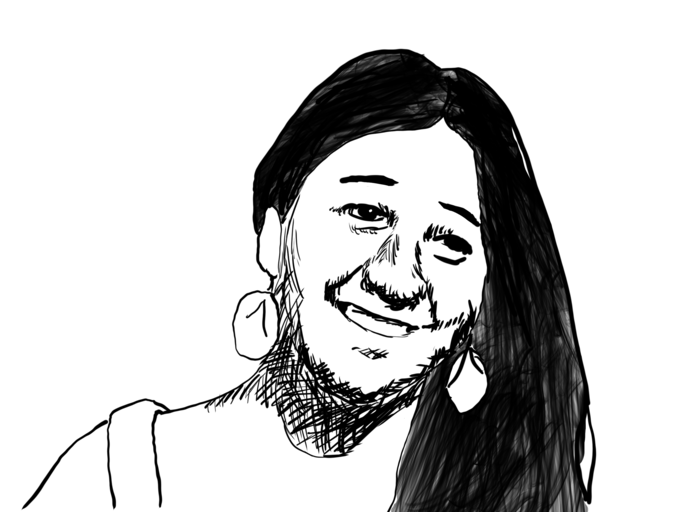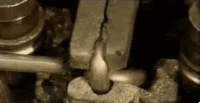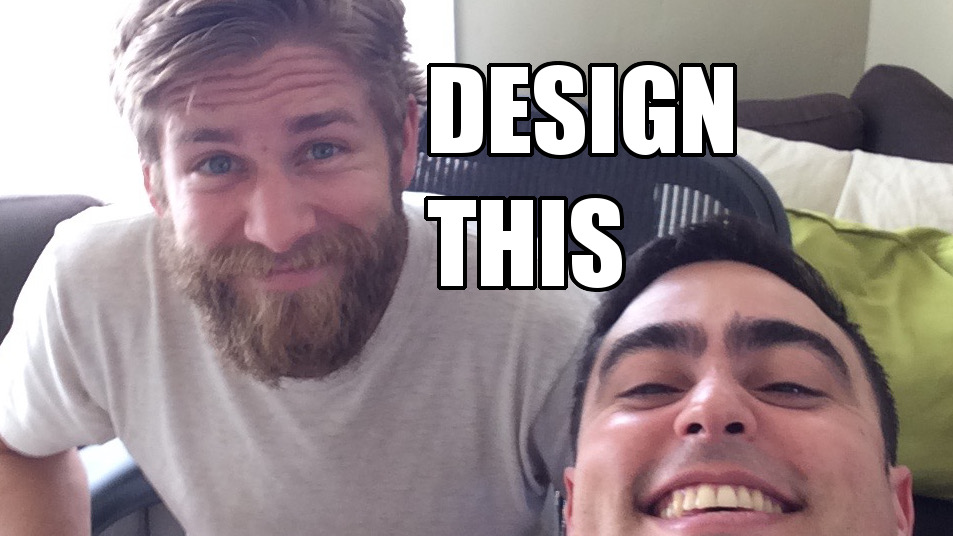Operational Data UX: Cecilia Silvestre
Cecilia Silvestre of OSIsoft joins us for a conversation about:
- what OSIsoft is and does and why they need user experience design,
- where Cecilia’s career path has taken her from her undergraduate degree in engineering,
- why development of soft skills is critical to careers in software engineering
For the full text transcript see below the fold:

Audio:
Play in new window || Download
Video:
Max: Welcome all! Max of the Accidental Engineer here.
Today we have the pleasure of Cecilia Silvestre joining us today. Cecilia, do you mind sharing your background and what you’re up to now? You’re at OSIsoft here in the Bay Area?
Cecilia: Yeah, here in San Leandro, City of Innovation!
Max: OSIsoft is huge–by that I mean over 1,000 employees. You’ve been there for nearly five years, is that right?
Cecilia: Yes.
Max: As a User Experience Designer most recently?
Cecilia: Yeah. I’ve been a User Experience Designer for about three years and before that I was a Customer Support Engineer.
Max: You are an awesome guest to have on because your undergraduate degree was in engineering, among other reasons—do you mind sharing what your undergraduate experience was like? You went to Northwestern University in the Chicago area?
Cecilia: Yeah, I studied Manufacturing and Design Engineering, which is part of the MaDE program, and there were only seven of us when we graduated. So it’s a very, very small relatively unknown degree.
It was about product design and development and was partially in the engineering school and partially in the design school. We did everything about product design and development: we did material science, we did mechanical engineering, how to build the things that you’re designing.
We did industrial design, so how to make what you were designing not only functional but also look really cool and good. And we did a lot of service and user experience design–how to design with a user in mind so that engineers don’t just think about technical solutions; they think about the product and its full scope of how end users are going to interact with it, how to make sure that what they’re making is not only functional but also enjoyable to use.
Max: Got it–you went to OSIsoft straight out of that engineering program?
Cecilia: Yeah.
Max: You were working in customer support type-of-role before taking on your user experience design type of role—do you mind sharing for people what that transition was like going into that first job out of school?
Cecilia: Sure—because the program was relatively unknown, finding a related job was very, very difficult. So I wanted to get into product design because that’s what I studied, so I thought “well, that will be an easy transition.”
No. Everyone saw “Manufacturing and Engineering” and just assumed that I would wanna do manufacturing work. When I looked for jobs I looked for stuff in California because that’s where the tech industry is.
My brother actually works at OSIsoft as well. He’s like, “Just work for this company because you can build your own future, you can eventually either start on the design team or do something with design,” so I joined on the customer support team.
It was really cool because it was working directly with customers but is also really technical. I had to know the PI system which is all of the insides [of OSIsoft’s product]. I had to know about security and IT stuff. You basically deal with upset customers 100% of the time.
Max: By nature of the role.
Cecilia: By nature of the role. You just hear how much [product features] suck and you get a really negative perspective, which grew my interest even further in going into design so that I can help solve those same problems.
I was talking to my manager and I was like, “This is really frustrating. Our customers want to do the simple thing and our product doesn’t do that.” And he was like, “Well, there is a design group, why don’t you go tell them.” Then I was like, “Fine. I will!”
Max: I think a lot of our audience may not have heard of OSIsoft before. Just for those who aren’t familiar, OSIsoft makes the PI system, which is a software for monitoring real time data in the “physical field.” So that means places like oil refineries or electric utilities, am I getting that right?
Cecilia: Yeah. It’s totally right.
Max: Do you mind sharing for people the types of design problems that exist for software in that area of business?
Cecilia: Yeah. Just to give a little bit more background, the product that OSI makes is called the PI system and it’s about getting operational data from all these different industries. We’re not industry specific so we get all these operational data and we help users visualize it and analyze it to make very important decisions.
For example, we’ve had oil and gas companies who need to make sure that the pressure in their pipes is okay, so that they won’t burst. Things like that. We’ve had companies that make metal sheets that if they don’t understand their data, the pieces of metal can go flying off of and potentially cause a mess of, “What just happened?”

So it’s very, very important that when they look at their screens, their data, they can tell what’s happening right away. That’s the biggest thing with the design space—we have to make all of the things easy to interpret right away so that if someone’s working at their desk and they see a flashing red thing, they know exactly what to do and how to rectify the issue really quickly. That’s something that we have to keep in mind when we’re designing, we have to make everything very simple and very easy to understand and very intuitive.
That’s not the case all the time because OSIsoft’s a very engineering-led company, but that’s what the goal is for the design team.
Max: It sounds like the undergrad degree that you got is pretty relevant to what you do now. Would you say that the curriculum that you had in your undergrad are things that you rely on today in your role in designing these systems?
Cecilia: You’d think that because I did manufacturing going into a company that does a lot of manufacturing type things, there would be some knowledge transfer. There really isn’t a lot of it, I mean, I understand from a technical perspective what our customers are doing, which is nice.
Most of what I use is from the design side of things. It was working with engineers and knowing how to speak both languages, so knowing how to talk to an engineer and a developer and how they understand things, and then also knowing how designers talk and how they understand things.
Max: For people who aren’t super familiar with the design process of software, OSIsoft has been around for a relatively long time, all things considered. It has some really established products that probably have some pretty established UX, User Experience patterns.
What’s the design process like on a mature software product like the PI System?
Cecilia: Yeah. I always thought of it as an engineering-driven company, so the design team is relatively new. I’ve been a part of the design team for three years. The design team itself has existed for maybe about six years and it’s just now becoming a lot more formalized and we’re just now establishing a process and a cadence for working with product managers and developers.
The process now is that usually we’ll do research to understand the problem. We’ll get a team together with a product manager who’s leading it and a development lead and we’ll establish what we need to do with that particular product.
Then we’ll talk to customers to re-evaluate if this is the right way, if this is something that’s actually a problem for them, it’s something that we need to solve and tackle and then we go on with the design process. The way that things went before was that it was mostly the “developers were the designers.”
Max: Brutal.
Cecilia: That doesn’t always go well. So we’re working to make the products that we’ve been making for decades into easier-to-use products.
Max: What are some of the skills that you’ve had to obtain in designing for UX software products that maybe previously engineers at OSIsoft do not have the time to obtain skill-wise?
What are some of the tools that you use in your job that maybe engineers aren’t aware of for doing UX design?
Cecilia: I mostly use Sketch, which is kind of an industry standard now at companies. It’s learning curve is way less steep than Adobe products. If you use that also use some products to document HTML and CSS, which is good for developers because it makes them happy that they don’t have to spend much time extracting or inferring from PDFs what we mean.
So that process’s a little bit smoother. You talk about skills that engineers don’t have time to learn or don’t have that UX people do possess, I think one of them is soft skills.
Max: Oh. For sure. Sounds like there’s some stories there!
Cecilia: Yeah. One thing that I do quite often is user interviews or usability testing, where I will sit with customers, usually one-on-one to get feedback on either a concept or the actual product: “s this something that is easy to use?”
Typically, when you’re interviewing or talking to a customer, you wanna be un-biased and you don’t want to lead them down a certain path. Almost every developer or engineer that I put into the room does not abide by those rules and will just…they’ll have a solution and they’ll say things like, “So we have the solution, that’s a really cool idea, right?” Or, “This is interesting, right?”
They’re just leading the customer, or if there’s any negative criticism they get really defensive. I’ve had some developers almost call a customer stupid or “you don’t know how to use it”—blaming them instead of the product. Every developer that I’ve worked with I’ve had to coach on how to interact with customers and how to get some of those soft skills, and I think that’s the biggest thing– you get to know how to use the same products that I use, but if you don’t have the soft skills then it’s just not gonna work out.
Max: No doubt. Starting out of school, you mentioned interacting with customers who have complaints about a product–they’re often communicating through indirect means like email or feedback forms.
Now in a UX Designer role you mentioned meeting one-on-one with customers–is that often done in person? Do you do it over the phone, email, screen share? How do you collect customer feedback about what end-users are actually experiencing?
Cecilia: All of the above.
If it’s an initial interview we wanna build rapport with the customer and if we’ve never talked with them before it’s really good to do it in person. We have done in-person interviews where either they’re maybe taking a class at OSI or we invite them to come or we go onsite to their company, which is probably the best thing to do because we get to see them in their environment and we get to see how they’re actually interacting with the PI system.
For more established cadences with customers, we usually will do a screen share, or a phone call will do. I don’t think we usually do surveys. People don’t wanna spend time doing surveys and I feel like every time I’ve done the survey people give one word answers, “yes,” “no,” “maybe”—not that helpful.
Max: You mentioned things like screensharing—there’s plenty of survey tools out there, but what are the most effective means for getting customers to agree to have you onsite? Are there cases where customers don’t want you onsite or it’s hard to convince customers to allow UX designers or researchers onsite?
Cecilia: Not at all. I think customers are really excited actually because this is the first time in many years that they’ve even met with a designer. They’re like, “You exist?” Every time we say, “we just wanna get your feedback on something,” they’re overjoyed because they feel like we’re listening now, whereas before if a developer or a product manager would come onsite and would talk to them, they’d feel like they weren’t really being heard as much.
It’s something about having someone there reassuring you that, “We’re actually listening to your feedback and we’re taking your feedback into consideration,” and then coming back months later to show them that we listened.
Max: You mentioned how OSIsoft has customers in a ton of different verticals, oil and natural gas, utilities, manufacturing plants, like you said. You also said that there were problems with servicing such a diverse array of customers–do you mind sharing what some of those problems are?
Cecilia: Yeah. We’re trying to make an application where it’s one size fits all– there are some problems where if we have, for example, a visualization tool, some people need to visualize things like boilers maybe. A lot of chemical companies will use stuff like that.

Then you have transportation companies that need to visualize trucks and things like that. Oil refineries have their own things to visualize. So you have to know every single industry and make everything encompass all of these little things.
When you’re designing a visualization tool, you have to make sure that you have all of these different visuals that all of these different industries are going to need. You have to make sure that you cover specific use cases for all of these industries instead of making tailored products for each industry.
That in itself is a little bit problematic because every industry has different needs and some industries really need scalability. They need to cover a lot of different sites specifically for oil and gas, they have tons of sites where they are drilling or upstream or downstream of that process.
And then you have smaller companies that really don’t need that much, and you have to make something that can be usable in a very small system. There are things that are hard in general to develop and to design for that. Everything is easier at a small scale and then to get into that really large scale it’s problematic, so we have to go through all these different scenarios and we have to make sure that the checklist is really, really long because of the fact that we have so many different industries.
Max: What in particular excites you about User Experience Design?
Cecilia: I think maybe it’s because I’ve been working for a company where design really new—it’s really exciting seeing how we can establish design to the company that has never really had design.
Also seeing our customers faces basically light up to the fact that we are listening and we’re now designing more intuitive products and they look at the products and they’re like, “‘I’ve been asking for this for 20 years.” Some of them have said that!
It’s kind of this exciting feeling that, you know, like, “We’re finally doing it. We’re actually getting there. We’re delivering.”
I think something that I’ve taken out of this experience with working with OSI is that typically, when you think of a designer, especially in the Bay Area, you think that they work at a very sexy company. A lot of the designers that I know or even the ones at OSI think that working for Google or Facebook is a lot more desirable than working for an operational data company.
I think that designers should give these types of companies a chance. It might not be the sexiest product out there, but there are people who really depend on this kind of thing, who really depend on the software and you are making a difference.
It’s also really exciting to work at a place where you are essentially establishing design for the very first time. So there’re a lot of companies that need designers that are just getting overlooked because they are not a sexy, cool brand and it’s also not consumer, so most people have never heard of OSI because why would they hear about operational data? They’re not in manufacturing roles.
Max: There’s not [exactly] an OSI app on their iPhone.
Cecilia: But everyone’s heard of our customers. Everyone has heard or heavily relies on some of our customers.
Max: Like, our electricity! Powering our lights.
Cecilia: Like, PG&E. For sure.
Max: I figure we should close by plugging whether you guys are hiring for any roles? Are you guys?
Cecilia: Yeah. So OSI right now is currently hiring for Visual Designers, Interaction Designers–which is technically what I am–but it’s more of a product design role, where you will do research and design. And we’re hiring for a Design Lead—so everything under the sun. If you have design in your title, you should apply!
Max: Awesome. Thank you for joining us, Cecilia.
